On Rebuilding, Part Nine: The Edmonton Oilers

Frequent commenter and guest contributor RexLibris’ series on rebuilds continues with the Edmonton Oilers. Get comfortable because this is a long one.
Before we get into the details, let’s set the stage a bit:
- Edmonton blew their team up, nuclear-style, and deliberately iced a bad team in order to get high picks.
- They have been rebuilding since 2006 and are no closer today to the playoffs than they were the year after the 2006 cup run.
- The Oilers are in the same boat as the Islanders and Blue Jackets.
- Management in Edmonton is incompetent. The Oilers have been one of the worst-run organizations in the NHL since the lockout and there is no reason to believe that they can improve simply because now they have better players.
- Just gathering together 1st overall picks isn’t going to resurrect the team and then when that talent blossoms they will leave for greener pasture, making all that effort an exercise in futility.
Those are some of the many criticisms that have been leveled against the Oilers and their rebuild. They come from both inside Edmonton and rival NHL cities, fans and critics, media and analysts. Do any of those statements actually ring true though?
We’ll start with a timeline on the rebuild of the Oilers and move on from there.
*As a side note, now the Yakupov has replaced Omark, does this acronym become H.Y.P.E.?
The Beginning of the End
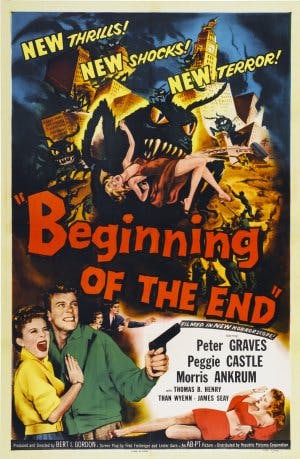
Prior to the lockout the Oilers were a small-market Canadian team whose business plan revolved around collecting playoff gate receipts in order to stay alive. The kind of rebuilding plan that NHL teams consider today was out of the question. The Oilers couldn’t be out of the playoffs too long otherwise the owners – Edmonton Investors Group – would lose money. The margin for error was thin and making the playoffs was less about winning the Stanley Cup and more about the survival of the team.
I need to make something very clear at this point. While I am somewhat critical of the EIG, and they do bear some responsibility for the collapse of the team, were it not for them, and specifically Cal Nichols, the Oilers would no longer be in Edmonton. The EIG was a complex and often clumsy structure for running a team; decisions were often made by committee where emotion and fan sympathies played too significant a role. Fans of the team owe as much to Cal Nichols as they do to Bill Hunter or any of the stars from the dynasty days. Nichols saved the franchise twice, first with the SOS season ticket drive in the early 1990s and then again when organizing the EIG to ensure that the team remained in Edmonton. That there were flaws within the group and some poor direction given must be considered within the scope of the dire circumstances facing the franchise at the time.
It was, in a word, a kludge – an imperfect, but essentially effective solution to the problem of local ownership.
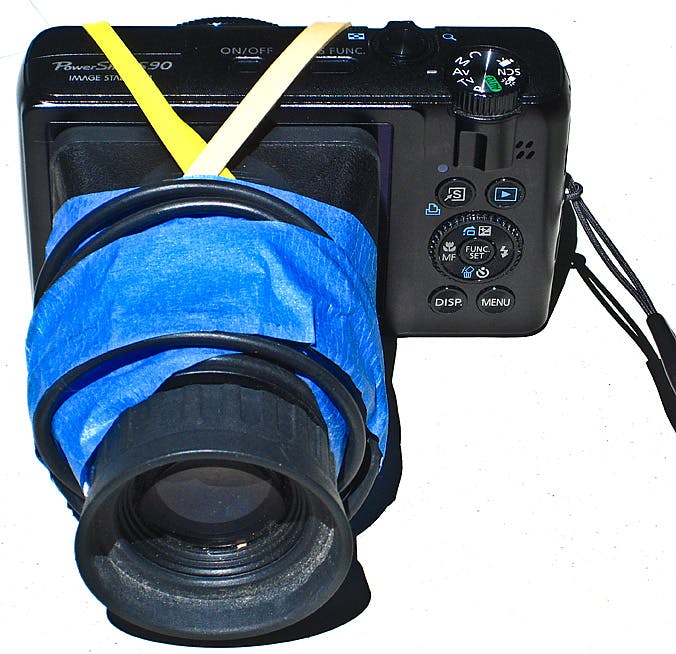
Surprisingly, the Oilers managed quite well under these circumstances, making the playoffs in six of the ten seasons prior to the lockout including five consecutive years between 1996-1997 and 2000-2001.
The salary cap era changed all of that and the seemingly heaven-sent reward to Oiler fans was the 2006 Stanley Cup run. This playoff series was accomplished by a very fortunate series of circumstances and some exceptional individual performances. It was not necessarily indicative of a good team hitting its stride.
Following the playoff run the Oilers suffered a mass exodus of talent, most notably that of Chris Pronger, but also Michael Peca, Jaroslav Spacek, Sergei Samsonov, Radek Dvorak, Dick Tarnstrom, and Igor Ulanov.
Despite the introduction of “cost-certainty” under the new CBA, the ownership group was still in shallow financial waters and felt it needed another year of gate receipts from a deep playoff run. Pressure was exerted on management at the time to retool the team over the summer and make the playoffs again.
In Behind the Moves Kevin Lowe said that, following the cup run of 2006 and faced with a mass exodus of players, “It was never really clear which way where we [were going]. We needed to generate revenue to pay the players. I guess in hindsight, with what I know now, at some point I would have gone to ownership – but I didn’t have that kind of experience – to say, ‘Let’s just break it right down,’ but they had been in that perpetual mode from when they were moving guys in the late 1980s and early 1990s." The decision not to tear everything down would only delay the inevitable.
This meant that for the 2006-2007 season players were asked to fill roles for which they were unfit. Square pegs in round holes, as well as relying on the overachievement of players at nearly every position, became a byword for the Oilers’ team strategy.
The team lacked depth at every single position, the drafting had been poor, and the development system couldn’t produce a good NHL player with any kind of consistency. Prospects were rushed in to fill roster holes and then criticized when they failed to achieve. Ownership and management tied the fate of the team to Tom Gilbert, Sheldon Souray, Ales Hemsky, Shawn Horcoff, Ladislav Smid, Sam Gagner, Andrew Cogliano, and Robert Nilsson.
As Kent Wilson so succinctly and poetically put it in the past, during this period the Oilers “tried to be good before they tried to be bad and the outcomes were the same”.
Following on the heels of Chris Pronger’s trade demand and subsequent comments about the city and its fans on the Jim Rome show, Dany Heatley then refused to accept a trade to Edmonton (something for which Oiler fans should today be thankful), and Michael Nylander allegedly reneged on a verbal agreement to sign in Edmonton after his wife burst into tears at the idea.
Things weren’t going well.
It wouldn’t be until after the 2009-2010 season that the full extent of the deterioration of the franchise would be known.
Don’t Look Now, But I Think We Just Drafted Robbie Schremp
The Oilers’ draft record leading up to the lockout and the few years prior to the new ownership is checkered. Assuming that on most occasions a drafted prospect cannot be reliably evaluated until five years after the draft, then a look at the selections of the Oilers from 2001 to 2007 reveals that approximately sixteen of the sixty-seven players selected went on to play at least 100 NHL games. Some of those games were a result of a poor development system and the organization’s commitment to those prospects. While the Oilers were able to draft NHL players more or less along the league average at the time, the quality that they found was largely in depth players. Jarret Stoll, Matt Greene, Fernando Pisani and others that would go on to become useful complementary players.
It was in the first round busts that the Oilers’ draft record eventually came home to roost. The repeated selection of players like Rob Schremp, Jani Rita, Jesse Niinimaki, and Michel Riesen meant that the system was starved for elite-level talent.
So what were the Oilers doing between 2006 and 2010? Simply put, they were trying to stay relevant despite a starved farm system, poor drafting, mediocre trades, and virtually no elite-level talent. When Kevin Lowe dealt Ryan Smyth at the trade deadline in 2007, at the time it was described by management, ownership and the media as a brief rebuilding draft binge before returning the team to the playoffs.
While improvement was made the following year, partially on the strength of some of the youth in Gagner, Gilbert, Nilsson and Cogliano, there remained significant gaps in the roster and those players were never capable of becoming a core group.
Yeah, but they were still rebuilding. You said so yourself!
The Oilers were absolutely not rebuilding during this period. Ownership refused to allow it and they’re instructions to management forbade it. The 2007 season and draft would best be described as a retooling.
The indicators of a rebuilding team run completely contrary to some of the actions of the Oilers at this time. Signing Sheldon Souray to a long-term contract at an inflated price and tendering an offer sheet to Dustin Penner are not the actions of a team looking to restock and rebuild a core. Those are the actions of a team desperately using any means necessary to stay relevant.
The youth brought in at this time was playing in a sheltered role and overachieved to some extent. Overhyped by both the media and the organization, they quickly reverted to their true level of ability and proved that the team had far deeper issues than a trio of young players could solve.

One common element to most rebuilding teams is a heavy focus on acquiring draft picks. A cursory glance at the Oilers’ drafting record between 2006 and 2009 suggests this was not a franchise focus, however. In those four draft years, the Oilers had five, six, five, and seven draft picks, respectively. The bulk of the picks during this period were also later-round selections, with ten of those picks being between rounds one and three and the remaining thirteen selections in rounds four and on.
In 2008 alone, the Oilers had only one selection in the first three rounds – the conditional draft pick included in the Pronger trade and converted when the Ducks won the Stanley Cup. This was used to select Jordan Eberle. In other words, if the Ducks had not won the Stanley Cup then the Oilers would have been sitting on the draft sidelines until round four and would never have picked Eberle. Their draft selection that year at 22nd overall was due entirely to the extraordinary accomplishments of another franchise which left the team’s fate in the hands of others.
That is about as damning a thing a manager can do, given the astronomical odds against what actually happened.
During those four years the Oilers added by trade as many draft picks as they sent away. Many of the moves made during this time were shuffling one overhyped player for another. This entire body of the Oilers trade history could be catalogued under the heading “diminishing returns”.
(Not So) Funny Farm
.jpg&w=3840&q=75)
At the exact time that the NHL’s new CBA made drafting and internal development the most important part of creating and maintaining a solid NHL team, the Oilers were trading away picks for immediate help, often in exchange for minor-league players or specialized talent such as Ales Kotalik. They also began to cut fiscal corners with their AHL affiliates. In 2005-2006 they shared AHL teams in Iowa and Hamilton with Dallas and Montreal, respectively. They neglected to even have an AHL affiliate in 2006-2007, relying instead on the generosity and roster availability of other NHL teams to billet their prospects. An example would be Jeff Drouin-Deslauriers playing in Wilkes-Barre Scranton, affiliate of the Pittsburgh Penguins, where the Oilers had absolutely no say in his coaching, development, or playing time.
By the time the Oilers did find an AHL affiliate in the Springfield Falcons, they’re drafting record and abysmal prospect development had already doomed that team to a miserable existence, finishing near the bottom of the conference during their entire partnership.
Short-sighted cost-cutting meant that even when the Oilers did draft well, they were probably going to undermine that player’s development along the way. I give tremendous credit to any prospect that was able to weather this organizational turmoil and still eke out an NHL career.
To quickly sum up thus far: the Oilers, partially under orders from a short-sighted and many-headed ownership group as well as by poor management decisions and a misinterpretation of the importance of the draft, sank to the lower third of the league, despite selling their future assets in draft picks for immediate gains. As mentioned, they tried to be good, and they sucked at it.
Katz
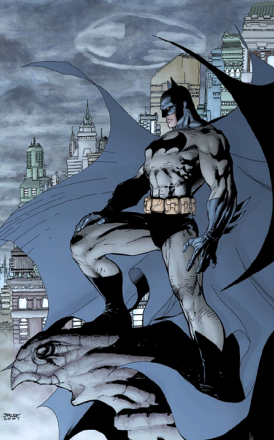
As we have seen in the cases of Chicago and Florida, a change of ownership can bring about a new perspective and a break with old habits.
On July 2nd of 2008, Daryl Katz’s purchase of the Oilers was ratified by the NHL board of governors, providing the team with both single-party ownership and greater financial resources than it had ever known. Katz’s first actions seemed eerily similar to some of those under the EIG in that the team would pursue at all costs immediate improvement and was treated as being only one or two players away from a playoff contender. The scale of the pursuit was much grander, specifically in the case of Marian Hossa, but the philosophy appeared to be the same.
At the same time, Katz had made declarations that were far from the usual message fans received from the EIG. He would put forward a significant amount of his own money towards a new arena, match that with money to build a state-of-the-art practice facility, flesh out the management team with proper training and administrative staff, and seek to solidify the AHL affiliation agreement.
Following the end of the 2008-2009 season, and his purchase of the team, and according to Bob Stauffer, Katz was the first member of the Oilers’ group to specifically use the term “rebuild”.
One of Katz’s first acts in ownership was to remove Kevin Lowe from his position as GM, instead making him President of Hockey Operations, and to hire, with Lowe’s assistance, Steve Tambellini as the new GM of the Oilers. In turn, one of Tambellini’s first acts was to hire Pat Quinn and Tom Renney as associate head coaches to replace Craig MacTavish.
Tambellini first tried to trade for Dany Heatley, offering Andrew Cogliano, Ladislav Smid and Dustin Penner before being rebuffed in famous fashion by Heatley who held a No Trade Clause. The groveling display of Lowe, Tambellini, and Quinn visiting Heatley in his Kelowna home and sending his agent a DVD extolling the virtues of the city and team remains a low point in the team’s shared history amongst fans.
Then Tambellini signed Nikolai Khabibulin to a four-year, $16 million dollar contract.
Halfway through the 2009-2010 season it became painfully clear that not only was this team not playing well, but that they probably weren’t all that good to begin with.
The on-ice performance was horrible and the prospects brought up from the farm team could barely be called replacement level players. The rays of light were few and far between, and those young stars that had given hope only a few years earlier were now being exposed as limited, complementary, or marginal talents. Injuries took what little wind the Good Ship Oiler had out of its tattered sails and the team finished with a record of 27-47-8 for 62 points, a dozen points behind 29th place Toronto and a full 17 points back of the Columbus Blue Jackets who finished 14th in the Western Conference. By season’s end, the team had posted a total man-games lost to injury of 530. On par with the L.A. Kings from a few years earlier and within hailing distance of the league record.
If I were to pick a date as to when the Oilers officially began their rebuild it would be sometime between December of 2009 and February of 2010.
Adversity Begets Opportunity
When fate rises up and smacks you in the face perhaps the best question to start with is “what have I learned from this?”
In the case of the Oilers it would appear that the lessons learned were that the organization desperately needed to add depth at every position, improve their development system, scout the professional ranks more effectively, and change the culture of the team.
Rather than simply finish the season and then justify the result by saying that had the team been healthy they may have been able to compete for a playoff position, Tambellini stated that changes needed to be made and the team’s response to the injuries and losses was unacceptable. Between December and February of 2009-2010, Tambellini openly stated that the team was going into a rebuild mode and that anyone who was not committed to winning at any cost was no longer welcome.
Changes would be made and no one was exempt.
Making it Right
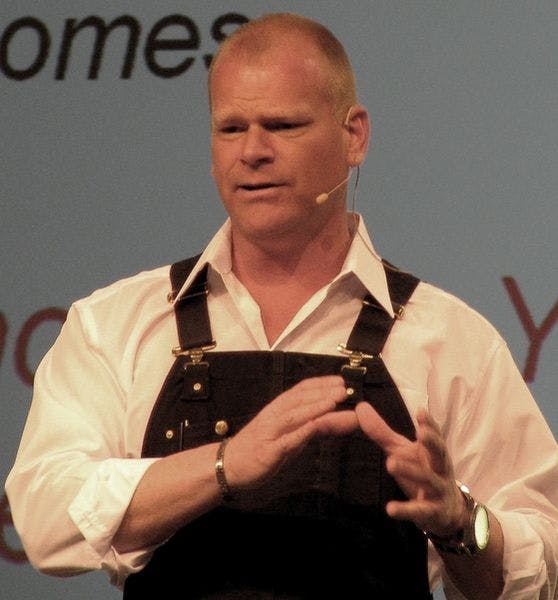
In the smoldering ruins of the Oilers 2009-2010 season, Steve Tambellini, as is now the custom in many NHL cities, held a meeting with season ticket holders to explain the team’s strategy for the immediate and long-term future. Tambellini explained the many shortcomings of the organization and outlined a plan to exploit the team’s poor situation and draft high. They would take the time to acquire, and then develop, the high-end talent around which a new team would be built. That would, in turn, foster a winning culture and lure NHL free agents to play in Edmonton.
During this meeting one message in particular became a constant refrain by the season ticket holders: take the time to do it right and they will support the team through the drought. A kind of covenant had been reached. If management was willing to be patient and prudent with draft choices and prospects then the fans were willing to be patient and continue to support the club through the long dreary days of extreme suckitude.
What patience has purchased today, however, success must deliver in full when the time comes.
The Takedown
What did Tambellini do when dismantling the 2009-2010 Oilers? Did he take a scorched-earth approach to the entire team, as is so often repeated? Did he even back up his earlier statement about player accountability?
Ryan Smyth had already been traded at the 2007 trade deadline. Ales Hemsky was signed to a long-term contract that was widely considered around the league as a value deal based on performance. And Shawn Horcoff was contractually obligated to remain in Edmonton until the Cubs won the World Series. Sheldon Souray had demanded a trade but due to his contract and injury history had effectively made himself untradeable. He was repeatedly waived with no takers and was eventually assigned to the AHL and then loaned out to the Hershey Bears before being bought out at the end of the 2011 season. The core at the time was Shawn Horcoff, Ales Hemsky, Sam Gagner, Tom Gilbert, Andrew Cogliano, Gilbert Brule, Ryan Whitney and Nikolai Khabibulin.
A look at the trades that Tambellini made at the beginning of the process will give some perspective to the kinds of changes that he initiated.
Beginning March 1st, 2010 the Oilers were open for business. Denis Grebeshkov was traded to Nashville for a 2nd round pick (Curtis Hamilton). Tambellini then traded Lubomir Visnovsky to Anaheim for Ryan Whitney and a 6th round pick (Brandon Davidson). He made history by trading Steve Staios to Calgary for Aaron Johnson and a conditional 3rd round pick (2011 – Travis Ewanyk. The Flames chose to take Max Reinhart in 2010). He traded drafted holdout Riley Nash to Carolina for a 2nd round pick (Martin Marincin), sent Patrick O’Sullivan to Phoenix for Jim Vandermeer, and would flip late round picks with Toronto, a 6th for a 7th (Kellen Jones).
At the 2011 trade deadline Tambellini traded Dustin Penner to the Kings for a 1st round pick (19th overall, Oscar Klefbom), Colten Teubert, and a conditional 3rd round pick in 2012 (Daniil Zharkov). A few months later he would re-acquire Ryan Smyth from L.A. for Colin Fraser and a 7th round pick (Dmitri Sinitsyn). Andrew Cogliano would also be traded to Anaheim for a 2013 2nd round pick.
This concludes the great fire sale of the Oilers. Aside from Visnovsky and Penner, there are virtually no NHL players of significance that were traded off the team. Many of the draft picks that Tambellini obtained were acquired by moving expiring UFAs or players that would serve no long-term purpose in the rebuilding of the team.
There was a great deal of roster turnover between the end of the 2010 season and the beginning of the 2010-2011 campaign. However, as noted above, very little of it was accomplished by selling off assets en masse. This was partially due to the fact that the Oilers had very little by way of valuable veteran talent. The Oilers would eventually let players such as Robert Nilsson, former captain Ethan Moreau, J.F. Jacques, Zach Stortini, Jeff Deslauriers, Gilbert Brule, and Liam Reddox walk away either through the waiver wire or free agency. The lion’s share of the roster turnover was in this category and the caliber of those players was such that they had virtually no trade value and therefore were simply let go.
In this regard, Tambellini was consistent with his earlier statement about removing from the team any players he deemed necessary in order to bring about the culture change of which he so often spoke. In fact, this would in effect be the second time Tambellini would address a need for a culture change within the organization. The first was during his press conference wherein he fired Craig MacTavish. It is possible that Tambellini was simply viewing the Pat Quinn firing and flushing of the veteran group as an extension of that earlier effort. Or perhaps he was changing horses mid-stream. In either case, new men were wanted (again) and Tambellini didn’t have to look very far.
Tom Renney was made head coach, with a mandate to teach the young Oiler prospects the elements of the professional game and foster a positive and professional team culture.
The culture of the team was set to change. Again.
Hitting Rock Bottom And… (Insert Drilling-For-Oil Pun Here
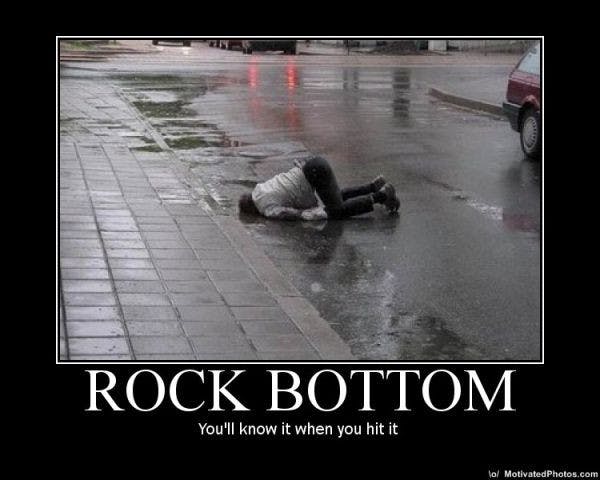
So why do so many people say that the Oilers did a nuclear-style rebuild? In this case it is a matter of interpretation. Tambellini didn’t blow apart the roster the way other GMs have in previous rebuilds because the Oilers didn’t have the talent to trade. He just stopped trying to hold it together with prayers and bailing twine.
Some of the veterans they ended up keeping were on virtually untradeable contracts and, unlike many other teams examined in this series, the Oilers hadn’t already drafted a new core of players ready to step in and take over the ice time. Edmonton had Devan Dubnyk, Jeff Petry, Jordan Eberle, Linus Omark and Magnus Paajarvi as highly rated prospects, but were not yet ready for the NHL. Dubnyk was still in the early stages of his development, Petry was leaving college to play in the AHL, Eberle had left junior and was playing a few season-ending games in the AHL. Omark and Paajarvi were still playing overseas. There was no Jonathan Toews or Evgeni Malkin type talents ready to step in and immediately upgrade any single position in the roster.
The major pieces around which the team is currently being constructed weren’t added until after the bottom had fallen out.
Having made several moves on the NHL roster, Tambellini’s attention would also turn inward to the management and administration of the organization. To begin with, Kevin Prendergast was fired, much to the relief of many Oiler fans. Prendergast had been the head amateur scouting for the Oilers since 2000 and was responsible for a myriad of picks ranging from good (Ales Hemsky) the bad (Riley Nash) and the Ugly (Jesse Niinimaki). At the time of his removal he was responsible for the AHL affiliate Springfield Falcons who had just finished at the bottom of the AHL standings in 2010, the same year that the Oilers finished 30th in the NHL.
Following that, the training staff was either retired or re-assigned, including Barrie Stafford, Ken Lowe (Kevin’s brother) and Lyle “Sparky” Kulchisky. Many of them had been with the team since the early ‘80s and were cherished holdovers from the dynasty days. Whereas most fans were relieved by the Prendergast removal, the removal of the training staff was criticized as being unfair targets of organizational mismanagement.
Around the same time Sheldon Souray publicly dropped his bomb on management.
Souray’s public comments about the organization and management had brought more attention to the franchise and focused a great deal of negative attention on several of the franchise’s perceived inadequacies.
It is telling that the Oilers management moved aggressively to address many of these issues by filling out the organizational chart with training support, developmental consultants and player contacts in an effort to open the lines of communication. The Oilers added Mike Sillinger and Billy Moores to the Player Development department prior to this and followed that by expanding both the professional and amateur scouting departments. Fred Chabot was hired as the goaltending coach alongside Simon Bennett as the fitness consultant. Steve Serdachny had been retained as a skating skills coach around the time of Tambellini’s hiring.
In other words, as bad as the team was on the ice, the overall franchise was, to some extent, in worse shape. Organizationally speaking, outside of the amateur scouting department, the entire hockey operations structure needed to be reevaluated. This is where Steve Tambellini made his most dramatic changes and it is in these departments where the charge of a scorched-earth approach has some merit.
The Draft

The Oilers essentially had a choice of two rebuilding models: either to draft and develop internally, gathering together top-end talent and developing it within the franchise’s strategic paradigm, or to trade draft picks for proven NHL-ready players, draft some high-end prospects who could make the most significant immediate impact, and then attempt to lure unrestricted free agents to complement the roster. The former is usually referred to as a Pittsburgh model, while the latter has many different titles attached to it, though perhaps Detroit could be considered a reasonable comparison that has had success.
While the Oilers have publicly stated that they are seeking to replicate the Detroit franchise model in gathering together a strong group of hockey minds and investing heavily into scouting and development, the Pittsburgh model is probably closest to their draft-and-develop method employed thus far.
In the 2010 draft, the Oilers followed a similar approach previously outlined in the Chicago, Washington, and Florida rebuilds where they loaded up on draft picks in a single year as a means to restock their farm system. In the 2010 draft year Edmonton had ten draft selections through seven rounds – Taylor Hall (1st), Tyler Pitlick (31st), Martin Marincin (46th), Curtis Hamilton (48th), Ryan Martindale (61st), Jeremie Blain (91st), Tyler Bunz (121st), Brandon Davidson (162nd), Drew Czerwonka (166th), Kristians Pelss (181st), and Kellen Jones (202nd) were all taken.
To date, seven of those ten have been signed with one, Kellen Jones, having recently elected to play overseas in Switzerland. Only Jeremie Blain and Drew Czerwonka were left unsigned and returned to the draft in 2012 where neither was re-selected. Of these prospects, one is in the NHL, two have played a season in the AHL, and the remainder are tracking well through their development and poised to turn pro this season.
The following year the Oilers had nine selections in seven rounds – Ryan Nugent-Hopkins (1st), Oscar Klefbom (19th), David Musil (31st), Samu Perhonen (62nd), Travis Ewanyk (74th), Dillon Simpson (92nd), Tobias Reider (114th), Martin Gernat (122nd), and Frans Tuohimaa (182nd) were all selected. Nugent-Hopkins is currently playing in the NHL while Klefbom, Perhonen and Tuohimaa are all playing oversees. Musil, Reider, Ewanyk, and Gernat are still playing in the CHL and Simpson is entering his second year in the NCAA.
Taking the 1st overall selections out of the equation, the draft record for the Oilers in those two draft years alone already far outstrips, in terms of talent and potential, most of Kevin Prendergast’s entire draft history during a much longer tenure with the Oilers.
In addition, the new coaches involved in Player Development (Billy Moores, Mike Sillinger and most recently Rick Carriere) are not only helping to develop and integrate the many Oiler prospects into the development system (they reportedly found two Slovak matrons living in Prince George to help translate and cook for Martin Marincin when he played with the Cougars) but are also keeping in constant, sometimes daily, contact with the players to help usher along their progress as athletes. A more stark contrast to the EIG days where players were billeted out to other AHL franchises like refugees could not be found.
Since 2010, the club has acquired two forward franchise cornerstones and restocked their prospect pipeline to the point that they have climbed up to 4th overall in the organizational prospect rankings done by Hockey’s Future while still graduating Magnus Paajarvi, Jordan Eberle, Taylor Hall, Ryan Nugent-Hopkins and Jeff Petry. The prospect pool is not only gifted with elite-level players, but considerable depth at virtually every single position.
After the Draft
So why on earth did they finish in 29th place in 2012? Surely this is proof that the Oilers are a failed rebuild akin to the Islanders and Blue Jackets before them.
In 2010 the Oilers were a bad team in virtually every category. Last in goal differential (-70), 18th on the power play, and 26th on the penalty kill. By 2011 they were still a last-place team, the goal differential was even worse at -76, the power play had dropped to 27th overall, and the penalty kill was even worse at 29th overall.
However, by the end of 2012 the goal differential had improved dramatically to -27 while the power play had risen to 3rd in the league and the penalty kill was ranked 14th. Progress, measurable and comparable, would appear to have been made. It remains to be seen if this progress will continue.
The Islanders are an example of a failed rebuild to an extent, but as stated in an earlier article, I would classify them more as a failed franchise. The Blue Jackets are absolutely an example of a rebuild gone wrong. However, the timeline of a franchise rebuilding through the draft is somewhere between four and six years from the point of bottoming out (finishing in the bottom three and drafting amongst the top three in June) to a return to the playoffs. The Penguins began their rebuild in 2002 and made the playoffs in 2006. The Chicago Blackhawks began their rebuild in 2004 and made the playoffs in 2008. The L.A. Kings started their rebuild in 2006 and next made the playoffs in 2009. The Blue Jackets began their rebuild at the time of their entry to the NHL in 2000 and have only made the playoffs once, in 2008.
By most reasonable estimations the Oilers rebuild cannot either be called a success or failure until one has gauged their progress in the 2012-2013 season through to the 2015-2016 season. Enough time must first pass to provide a basis for such a declaration.
Steps Taken
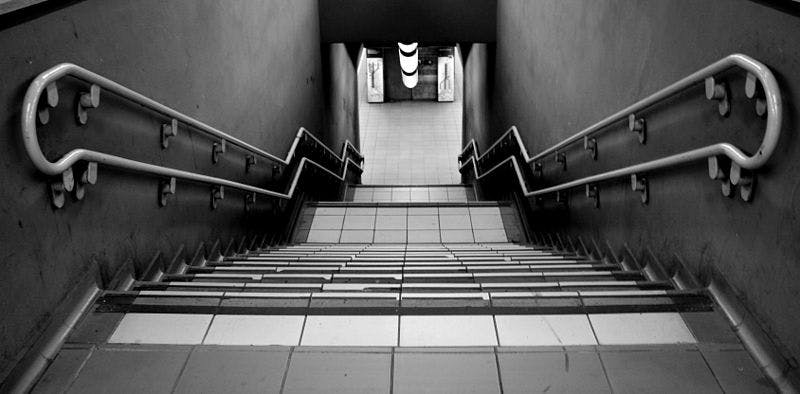
(Photo: Dela Andy Kumahor/Wikimedia/CC BY-SA 3.0
Of course, any idiot can make a lousy team and draft first overall. The trick seems to be in acquiring the correct player with that pick, and then following up that acquisition with other players who can help to capitalize and complement the drafted talent to create a team whose whole is greater than the sum of their parts.
Given the current collection of talent and potential that the Oilers possess, it is as easy to defend their methods as it is to criticize them for failures to improve immediately. In either case, for the time being opinion must reign until results are shown.
While it is a common refrain that some of the best trades are the ones a GM never makes, this is not a defensible position for Tambellini or his supporters at this time. Instead, in order to advance the discussion it is best to rephrase the question: has the management group actually improved the team, or does any improvement rest primarily on the work of the amateur scouting staff and their drafting?
During the off-season of 2010-2011 the Oilers added Kurtis Foster, Colin Fraser, Martin Gerber, and Richard Petiot. Petiot and Gerber were signed as AHL/NHL insurance policies while Fraser was acquired to address the issue with the 4th line center role. Foster was added to provide some defensive depth as well as a PP point-man. None of these players made any significant impact and it is telling that none of them were around at the start of the 2011-2012 season.
The following summer the Oilers added Eric Belanger, Ben Eager, Cam Barker, Darcy Hordichuk, Andy Sutton, and Yann Danis through free agency and trades. Of this class of free agent signings Hordichuk and Danis were perhaps the two that delivered the most, albeit because so little was expected from them in the first place. Of these players only Barker will not return for the 2012-2013 season.
Some of the holes on the forward roster that were apparent at the outset of the 2010-2011 season have gradually been filled either by internal development or free agency. Tambellini seems to be comfortable relying on his scouting department to correct many of the weaknesses in the roster and addressing them from within. It remains to be seen whether his actions will be regarded by posterity as patience or incompetence. Suffice to say that there are more who subscribe to the latter than the former at this time, and with some justification.
Management Review
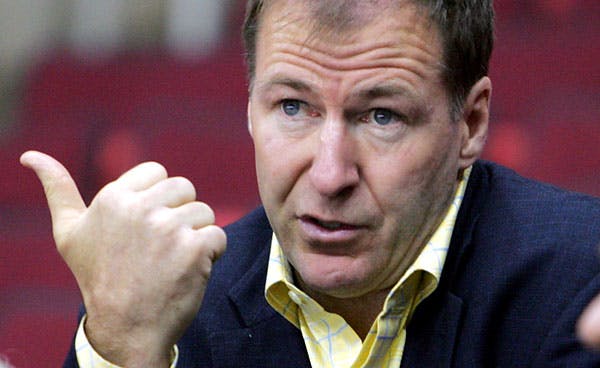
I have already listed many of the moves that have taken place during Lowe and Tambellini’s tenure with the Oilers. Without a doubt there are some first-class bonehead moves in that time: the trading of Ryan Smyth over a difference of $100,000 during contract negotiations, the constant movement of draft picks for players followed by the re-acquisition of those picks at an inflated price in order to facilitate an offer sheet on Dustin Penner, the signing of Nikolai Khabibulin to a four-year $16 million dollar contract, the desperate groveling to Dany Healtey, and the gambling on Cam Barker in a year where Ryan Whitney was already coming off of surgery are just the ones that I can list off the top of my head.
Positives? The exchanging of Kurtis Foster for Andy Sutton is certainly an upgrade in that Sutton is a more well-rounded 6th-7th defenseman. The addition of Eric Belanger, at the time of the signing, looked to solidify the 3rd-4th line center position and relieve some of the faceoff pressure on Shawn Horcoff. The move to put Tom Renney in as head coach in 2010 and give him the mandate to teach the young players, regardless of results, was seen as a positive step. The trading of Patrick O’Sullivan for Jim Vandermeer and Steve Staios for Aaron Johnson and a 3rd round pick was good asset management. The addition of Ryan Jones through the waiver wire has looked like a shrewd pickup and the successful courting of Justin Schultz has gone a long way to salve the wounds left by Pronger, Heatley, Hossa and Nylander. The trade of Dustin Penner for two draft picks and a prospect was, in my opinion, a case of properly leveraging an asset for the most valuable return in keeping with the long-term needs of a team.
So let’s look at the management group that exists today (excluding Craig MacTavish)…
Kevin Lowe, Rick Olczyk, Steve Tambellini, Stu MacGregor, and Daryl Katz are the central figures involved with the team that have held and retained their positions from 2008 to the present. If the failures of the 2009-2010 through to the 2011-2012 seasons are to fall on the shoulders of anyone it is these names that ought to be under review. But to what extent, and for which errors, ought those individuals be held to account?
Lowe and Tambellini are generally at the top of the most people’s organizational list while MacGregor has been all but canonized in Edmonton sports lore. Olczyk, by virtue of his position within the team is more or less out of the public eye and subsequent scrutiny. I believe that Olczyk’s contributions will become far more prominent in the franchise over the next few years as a result of the new level of cap management this team will require. Any failures of his in this position could have significant, far-reaching ramifications for the franchise’s talent base.
Katz, as owner of the team and a local business hero of sorts, is also somewhat free of public criticism, at least insofar as it pertains to the day-to-day running of the team. Much of his public persona has been connected to the arena issue more so than issues of management and it is in that area where most of the public complaints are aimed.
Let’s start with Tambellini.
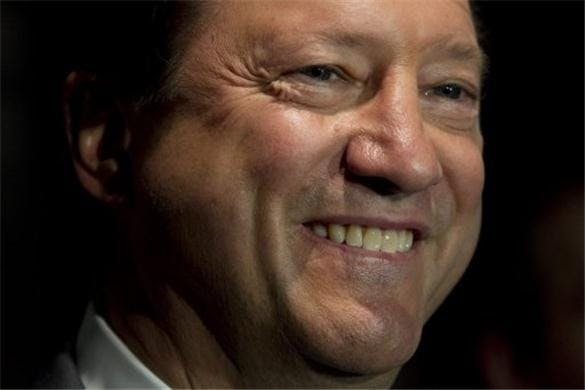
Is Steve Tambellini the worst GM in the league? I don’t believe that there aren’t any worse general managers working currently. It is a select club and the margin for error is sometimes quite narrow. Perhaps Steve Tambellini could be said to be one of the better GMs for the Oilers at this time in their franchise history, but it could as easily be argued that there are far more capable individuals who ought to have been at the helm.
If, at the end of this tenure in Edmonton, the best that can be said is that he didn’t screw the rebuild up, it may not be enough to save his reputation. His reticence and general aversion to risk has meant that the Oilers have retained their young prospects. That same caution has also been a source of criticism in that the team could have rebounded more quickly and with greater impact had he been willing to part with some assets for immediate roster improvements. Again, the results of the crucial years four to six will need to be seen before a lasting declaration can be made.
Lowe has shown, prior to the lockout and immediately following it, that he has the ability to assemble talented players. His track record following that, however, is nothing short of disastrous. Sports stories tend to be defined by the last chapter of the book. As such, Lowe’s legacy will largely be written by the team’s record when he is finally shown the door.
Olczyk is primarily responsible for contract negotiations and the salary cap. It is interesting that after signing Hall and Eberle to what has been considered reasonable contract extensions, the credit is extended almost entirely to Tambellini, while very little has been mentioned of Olczyk’s involvement. As mentioned above, I feel that he may end up being the member of the management group that is most overlooked relative to his impact on the team.
The structure of the Yakupov and Nugent-Hopkins second contracts, and how they mesh in with the Hall and Eberle deals, will go a long way to determining the success of this rebuild. There will not be a large margin for error in this department. He has negotiated some very good cap hits in Eric Belanger, Darcy Hordichuk, Andy Sutton, Corey Potter, Ben Eager, Lennart Petrell, Theo Peckham, Ryan Jones, Ryan Smyth, Ladislav Smid and Jeff Petry. The contractual albatross that bears Shawn Horcoff’s name is typically seen as originating higher in the organization.
By the same token there have been some glaring errors in his time with the Oilers. Jonathan Willis mentioned some of these when I consulted with him on this topic – most of which I had forgotten. There was some miscommunication with the media over Brule’s waiver eligibility, uncertainty over the amount and timing of bonuses payable to Dany Heatley, and some confusion over the signing deadline for Teemu Hartikainen following his draft year.
In short, Olczyk has shown he can do the smaller, marginal player contracts fairly well, that his knowledge of the CBA is not airtight and that either he or the organizational framework in which he is placed suffers from some breakdowns of communication. If it all goes sideways, this is where I’d put my money on it being tracked to.
Stu Macgregor has done exceptionally well and prior to his signing a contract extension with the Oilers this past year there were several teams expressing keen interest in his services. It would appear his scouting staff made good decisions with the Oilers’ 1st round selections in each of his draft years since 2008. As well, the depth picks that have been made by he and his team have tracked relatively well with the exceptions in Cameron Abney and Troy Hesketh. While you can find fault with this group, it is telling that you generally have to look for it.
Daryl Katz has periodically interfered with the running of the organization, for better and worse. He influenced the Horcoff contract, lobbied to bring Georges Laraque back before the former Oiler signed with the Canadiens, was involved in pursuing Marian Hossa, and hosted separate dinners with Taylor Hall and Tyler Seguin prior to the 2010 draft. He has recently shown more willingness to step aside and allow the hockey operations to run under their own direction. Balancing ownership duties is tricky and the NHL is long on the history of those who did not do it well. Katz appears to be learning that balance and Oiler fans are all crossing their fingers that he doesn’t have some sort of dissociative episode and start channeling Al Davis. In the meantime there is very little to suggest that Katz intends to override the suggestions of his hockey employees and treat the Oilers as his personal fiefdom.
In his time as owner, Katz has brought money, stability, leadership, money, a corporate strategic paradigm, a fan’s enthusiasm, and did I mention money, to the franchise that has lacked in those areas at various times in their ownership history. If Oiler fans had to draw a happy, MS Paint picture of their ideal franchise daddy, Katz would probably be it. His approach in the arena development dealings has drawn a great deal of attention, both for and against. I have deliberately avoided any discussion of this here because I feel that it is outside the scope of the article and I am running out of dimes to feed into the interwebs wordiness meter.
Summary
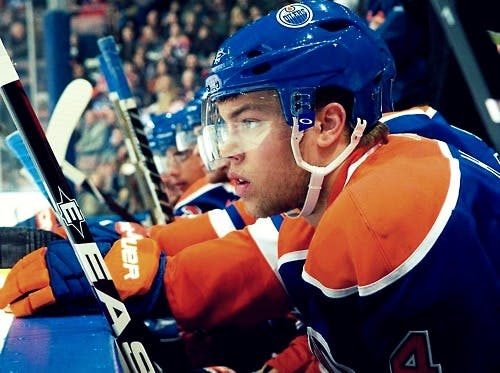
Edmonton blew their team up, nuclear-style, and deliberately iced a bad team in order to get high draft picks.
The Oilers did dynamite certain aspects of their organization during the rebuild, but the on-ice roster wasn’t the principal target. They shrewdly moved out players that would play no role for the team as it moved forward in exchange for draft picks in order to restock their farm system. They also let go a number of veterans that had a place on the roster but that no longer appeared to have a place on the team in an effort to change the culture of the team and back up the statement that players would be held accountable. That this had the result of making the team immediately weaker and thus in a position to draft higher is also true.
Where the Oilers did engage in a massive clearing of the decks was in their support staff and some areas of hockey management.
In 2009-2010 the Oilers did not deliberately ice a bad team. They deliberately iced a hockey team, and it was bad, but the two were only coincidental. That team earned its 30th place finish based on a combination of injuries and awful play. To borrow from a popular phrase around FlamesNation, it was an act of intellectual honesty for management to accept that reality and draft a long-term plan to correct the systemic issues that had come home to roost during that season.
After that, the franchise put together a roster with what free agents were available and willing, an occasional trade-in, some prospects that were ready to play in the NHL, and the serviceable remains of the roster retained following the debacle of the 2009-2010 season. That it was another horrific season and consecutive 30th place finish is hardly surprising, in part because that was the best the Oilers had at hand and it is indicative of the extent of the organizational malaise, not a deliberate act. The Oilers were still an ordinatio (team) non grata for most players around the league and had so very little by way of NHL-ready prospects that a 30th place finish was not surprising to anyone who knew the team.
Until the end of the 2012 season the Oilers were well below the league average in terms of their NHL talent, both potential and realized. Rather than attempt any immediate improvement by furthering that organizational deficit in the long-term through the trading of draft picks or prospects they preferred to retain the assets. As a result of a combination of mismanagement, failed trades, poor drafting, shoddy development, and injury, and with some help from the draft lottery, the Oilers became the first NHL team since the Quebec Nordiques to have the 1st overall selection in the draft for three consecutive years.
They have been rebuilding since 2006 and are no closer today to the playoffs than they were the year after the 2006 cup run.
The Oilers have not been rebuilding since 2007 simply because the EIG would not allow for it. Remeber – "they tried to be good before they tried to be bad and both times the outcome was the same”. A rebuilding team doesn’t tender offer sheets or sign 36-year-old goaltenders to be starters.
The Oilers are in the same boat as the Islanders and Blue Jackets.
The Islanders and Blue Jackets are very different business states than the Oilers. These teams may have connections of history and personnel, but nothing much else. The Blue Jackets are an example of a failed rebuild and have recently begun the process anew. The Islanders are just plain failures. They may yet get something sorted out there, but I wouldn’t put any of my money on it.
Management in Edmonton is incompetent. The Oilers have been one of the worst-run organizations in the NHL since the lockout and there is no reason to believe that they can improve simply because now they have better players.
The management group in Edmonton is partially responsible for getting themselves into this mess. They are now tasked with getting themselves out of it. T
hat poses a problem with trust.
Part of this responsibility must reside with both the EIG and Daryl Katz. Since new ownership asked management to do something very different from their recent past, and having afforded them the time and space (and manpower) to pursue it according to their own plan, things have improved. There were miles and miles available for improvement. Time will tell, but the difference between a genius and a madman in NHL GM circles is often a matter of circumstances and chance and it is too soon to try and decide one way or the other.
It deserves mention that several members of this same group have been tasked by Hockey Canada with assembling talent for international competitions, with varying levels of success. There is an aptitude for this work within the group, it remains to be seen whether they can demonstrate it within the circumstances of the NHL environment. They will not survive another rebuild.
Just gathering together 1st overall picks isn’t going to resurrect the team and then if/when that talent blossoms they will leave for greener pasture, making all that effort an exercise in futility
Taken at face value, that first statement is true. It takes more than just a collection of star players to win a championship. However, gathering together those players can be one of the hardest things to do in professional sports. There aren’t many ways for teams to acquire elite-level talent, and being able to draft and develop them is one of the most affordable means and coveted abilities in the current NHL. It’s as good a place to start as any.
There is no reason to believe that the Oilers cannot retain much, or even all, of their developing talent under the salary cap system. None of the players drafted have the resume or pedigree of the truly elite talents like Sidney Crosby, Alex Ovechkin, or Steven Stamkos. They are phenomenal, and have the potential to be stars in their own right. However, as Jonathan Willis recently wrote, given their production and playing positions, it is likely that the Oilers will be able to retain most of the young core through their second contracts and perhaps beyond, depending on circumstances.
The Last Word
The Oilers were bad, they got worse. They took a hard look in the mirror and decided to do something drastic to change it. Things look better and they are repeatedly mentioned as a young team with tremendous potential. Much work remains to be done and nobody is certain that Tambellini, Lowe and the rest of the management group are the best people to do it. They are, however, the management team at hand, and fans have little recourse but to wait and trust that things will improve.
For further reading there are some terrific articles on the Oilers and the rebuild, sans rose-coloured glasses, listed below:
- http://publish.oilersnation.com/2012/3/29/the-brilliance-of-the-rebuild
- http://360analysisavenue.com/2011/12/edmonton-oilers-%E2%80%93-the-worst-franchise-in-the-nhl-maybe-not-but-they%E2%80%99ve-got-to-be-damned-close-by-now/
- http://www.mc79hockey.com/?p=4536
- http://publish.oilersnation.com/2012/7/12/can-the-edmonton-oilers-keep-their-young-core-together
- http://www.coppernblue.com/2012/1/26/2731536/steve-has-already-done-enough
PREVIOUSLY IN THIS SERIES
- On Rebuilding, Part One: The Pittsburgh Penguins
- On Rebuilding, Part Two: The Washington Capitals
- On Rebuilding, Part Three: The Chicago Blackhawks
- On Rebuilding, Part Four: The Toronto Maple Leafs
- On Rebuilding, Part Five: The Los Angeles Kings
- On Rebuilding, Part Six: The New York Islanders
- On Rebuilding, Part Seven: The Columbus Blue Jackets
- On Rebuilding, Part Eight: The Florida Panthers
Recent articles from Jonathan Willis





